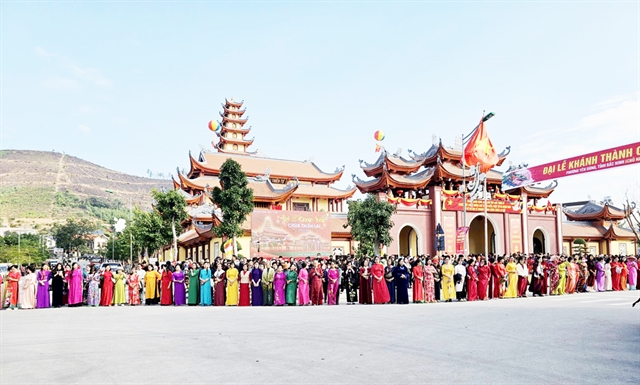 Life & Style
Life & Style


|
| A group of men enjoying a sunny lunchtime on the iconic blue stools in Hà Nội. VNS Photo Sean Nolan |
Seán Nolan
HÀ NỘI – Hà Nội is a city that truly captivates the hearts of both locals and foreigners alike. The feeling of cruising on a scooter along the lake, sipping on an alarmingly strong cà phê sữa đá from a balcony overlooking a leafy street, or enjoyign a cold beer on a little plastic stool on the street cannot be replicated anywhere else in the world - especially now that the sun is shining.
These things are all quintessential Hà Nội, and should be protected; after all, it is exactly what draws tourists and expats alike to Việt Nam.
Yet, the iconic little plastic stools that dot the footpaths and pavements of the capital, leaving me teetering like a skyscraper on top of a toothpick, are under threat.
The authorities in Hà Nội have been cracking down on businesses that occupy or encroach on pavements and footpaths, and with good reason.
While Hà Nội may exude charm, one thing that cannot be said is that the city is pedestrian-friendly.
According to the Vietnam Investment Review, in 2017, the average Vietnamese person only took 3,600 steps a day, far below the world average of 5,000, and a mere third of the World Health Organization's recommended 10,000 a day.
The issue lies in the numerous street vendors, coffee shops, and parked vehicles that obstruct the path of pedestrians.
These obstacles make it difficult to walk from point A to point B, turning a leisurely stroll into a frenzied dance around parked cars, rows of motorbikes, and pop-up stalls.
There are no black-and-white answers - pedestrians deserve space to walk, businesses require space to operate, and vehicles need a place to park.
Any solution requires a compromise between the needs of the three parties competing for pavement real estate.
As footpaths and pavements are primarily for pedestrians, a clearly-defined, non-negotiable "space safe" must be ensured that allows ample room for uninterrupted walking.
Providing they do not encroach on this space, businesses should be allowed to continue operating as they always have done on the streets, preserving the 'street charm' that has made the capital so popular.
For vehicles, the centralised parking lots that are found in other cities around the world should be established throughout Hà Nội, coupled with hefty fines for parking illegally. Providing the centralised parking lots are well-placed and reasonably priced, there would be no excuse for parking elsewhere.
While it is important to address the issues of pedestrian safety and vehicle parking in Hà Nội, it is equally important to preserve the quintessential charm that makes the city so popular with tourists and expats alike.
The bustling energy of street vendors, cafes and motorbikes is what makes the city so unique and so any solution must be carefully crafted to ensure that it does not ruin the very essence of Hà Nội's charm.
With cooperation and compromise, we can create a vibrant, pedestrian-friendly city that retains the street life that makes Hà Nội so special. VNS




